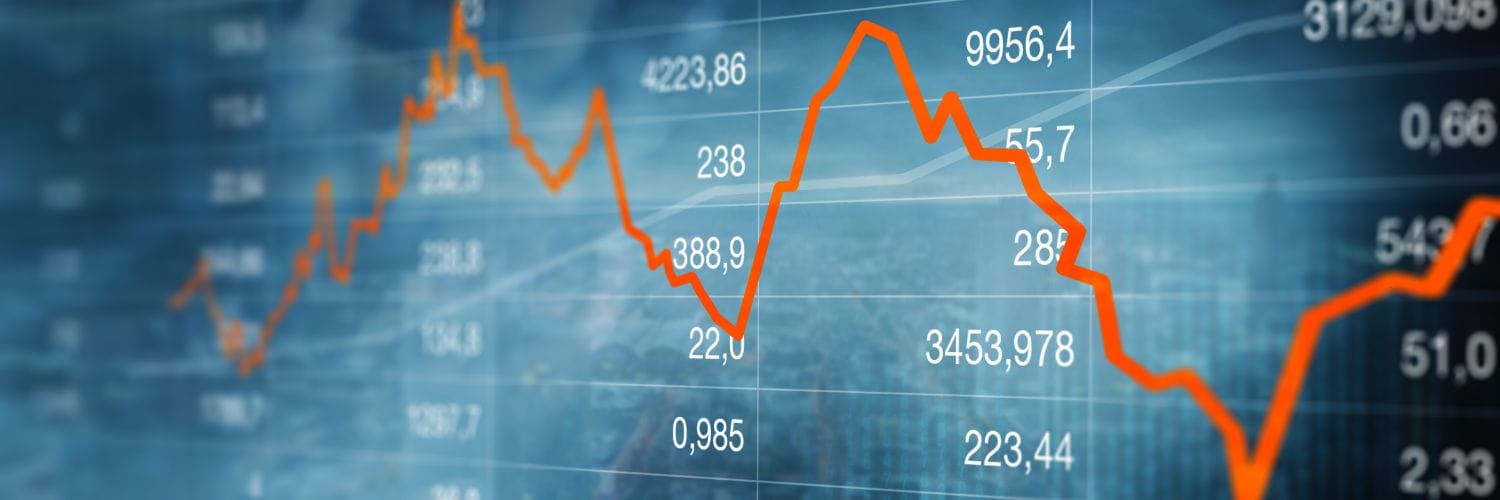“The most important item over time in valuation is obviously interest rates.”
Quite a statement, and my thought is, how much do we understand interest rates and their effect on the stock market? In the chaos of the stock market today, with the extreme volatility we have been experiencing between the coronavirus concerns, ongoing oil war, and the abnormally low-interest rates, there are a ton of worries right now as an investor.
Recently, the Fed lowered the interest rates by 50 basis points in the hopes that this might stop the bleeding in the stock market. It didn’t seem to make much difference, and there are rumors that the Fed will lower the rates a full percentage point, bringing the rates to the lowest since December 2008 at 0.25%.
These rates are and would be the lowest in US history and are historically low worldwide. These rates significantly impact the stock market, bond market, mortgages, credit cards, and all credit devices.
In today’s post, we are going to discuss the following:
- What Are Interest Rates?
- Correlation of the Bond Market
- Why Do Interest Rates Change?
- How Do Interest Rates Affect the Stock Market?
- What Kinds of Companies Fair Well in Rising/Falling Rates?
What Are Interest Rates?
According to the balance:
“An interest rate is the percentage of principal charged by the lender for the use of its money. The principal is the amount of money loaned.”
Anyone can borrow or lend money, but banks are the principal borrowers and lenders. Banks use our deposits from our accounts, either checking or savings, to fund loans. They pay us an interest rate for the use of our funds and encourage us to deposit our funds in their accounts.

One of the most critical ways that banks make money is the spread on the interest rate they charge you to borrow money from them as opposed to the interest rate they give us for our deposits. Most people think it is on the fees they charge us, but while annoying, is not anywhere near the truth.
The rates a bank will charge us for a car loan depend on either the 10-year Treasury Note or the Fed Funds Rate. More on that in a moment.
Where interest rates can get tricky for borrowers is when you pay only the interest rates on loans, you are not attacking the principal, and if you don’t pay the interest rate in your payment, the total amount of the debt will grow.
Fed Fund Rates
A quote from Investopedia:
“The federal funds rate refers to the interest rate that banks charge other banks for lending them money from their reserve balances on an overnight basis. By law, banks must maintain a reserve equal to a certain percentage of their deposits in an account at a Federal Reserve bank. Any money in their reserve that exceeds the required level is available for lending to other banks that might have a shortfall.”
All banks and other depository institutions have a mandate that they have non-interest-bearing accounts with the Federal Reserve to ensure they have enough funds to cover any depositor’s withdrawals. Each bank must keep in its accounts a balance known as a reserve requirement, which they base on the bank’s total deposits.
The good news for the banks: if they have reserve excess, they can lend that to other banks with interest. The interest rate these banks lend at we refer to as the fed funds rate.
The board of governors of the Federal Reserve Banks meets eight times a year to discuss rates and set the target rates for banks to use. The governors do not have the power to dictate to banks what specific rate they charge; instead, they set a target rate such as 1% to 1.5%.
The banks negotiate the rates between the two banks.
While the Fed can’t dictate the Fed Funds Rate, they can manipulate the rates by adjusting the money supply. If they increase the amount of money in the system, they can adjust rates down, and likewise, with a decrease of money in the system, increase rates upward.
The fed fund rates are, by far, the most important rate in the US economy because it affects both the monetary and financial conditions, including items such as employment, growth, and inflation or deflation. Also influenced by the fed funds rate are short-term rates such as home loans, car loans, credit cards, and mortgage rates.
The stock market also keenly watches the fed fund rates because the market reacts very strongly to rate changes.
Correlation of the Bond Market
Interest rates and bonds have an inverse relationship; think of a teeter-totter. When interest rates rise, the prices of bonds fall, and when interest rates fall, bond prices rise.

The correlation may seem strange, but let’s dive in a little closer and try to reason this out.
An easy way to think of it: most bonds pay a fixed interest rate or coupon. If the interest rates fall, the bond coupon becomes much more attractive, and investors will bid the bond price higher.
Similarly, if the interest rates rise, the coupon rate becomes less attractive, and investors will bid the bond price lower.
Like all investors, bond investors are looking for the best return. If interest rates rise, giving the bonds a yield of 8%, the old bond yielding 5% becomes less attractive. Who wants to own the lower-yielding bond? No one!
To attract the investor to the lower-yielding bond, they would have to lower the price to make it more attractive and reach the same yield as the higher-yielding bond.
Let’s take a case study to help illustrate how this works.
- You buy Microsoft’s AAA-rated bond for $1000
- It matures in 10 years, and we get our original $1000 back. Yippee!
- The bond has a 3% coupon, meaning we get 3% a year, or $30.
One year later, the interest rates increased to 4%, and you decided to sell the bond.
When you enter your order to sell, other potential investors will compare your 3% yielding bond to the current 4% bonds on the market.
To match the yield on the 4% bond, you will need to adjust your price to match that yield.
Let’s say the 4% bond matures in three years; we will need to adjust our price.
If the investor buys our 3% bond and holds it to maturity, they will yield $270 over the nine years in interest payments. The math equals $30 x 9 = $270.
The math on the 4% bond would be $40 x 10 and equal $400 over the ten years.
To make up for the difference in the yield, we would have to lower the price of our bond to $925 to achieve the same 4% yield.
Now, because the investor could buy the 3% bond at a lower price, they would achieve the same total return if they held the bond to maturity in ten years. You would receive the full $1000 if you held the bond to maturity in ten years, regardless of which price you pay for the bond.
The reverse of all of the above happens if rates fall. Bonds that are farther from their maturity date will be more susceptible to interest rates, and fluctuations in price are more likely.
Another idea of the correlation between stocks and bonds is when the stock market takes a downturn, people sell their stocks and put their money in the bond market for safer returns.
Overall, bonds tie closely to the interest rates and fluctuations of the rates the fed issues, whereas the stock market is related more closely to the stock market’s performance.
Bonds with high-yield or junk status are much closer linked to the market because the underlying businesses that issue the bonds are volatile. The volatility causes the bonds’ prices to fluctuate like a stock.
Why Do Interest Rates Change?
In relation to the Federal Reserve, more money in the system lowers the interest rates. And conversely, less money in the system raises the interest rate.

The Fed uses interest rates to control the flow of money in the system using the supply and demand system to set rates for borrowing, either from the fed funds rate, fed rates for banks to borrow from them, or the rates banks charge consumers to borrow money.
The Fed will set rates based on the economy, inflation, unemployment, and supply and demand.
The money supply in the US economy will fluctuate based on the actions of the Fed and commercial banks. According to the law of supply and demand, the interest rate charged will be higher or lower depending on the amount of money in the system.
If there is an increase in the amount of money available to borrowers, this will increase the credit supply. Likewise, the credit available to the economy decreases when lenders delay loan payments. When we choose to delay paying off our loans, we cause a decrease in the amount of credit available in the market, which in turn increases the interest rates in the economy.
In addition to supply and demand, market risk is another factor regarding interest rates. Risk premiums reflect the amount of risk an investor is willing to take on an investment.
The risk premium guides the investor’s willingness to invest; for example, an investor likes an investment of 5% and another of 6%. But the 6% investment is riskier; to take the investment, the investor might require a higher risk premium to take that risk, say, 8%. The rising risk premium also causes the interest rates to climb according to the riskiness of the stock market.
Inflation is also a factor involved in interest rates. The higher inflation goes, the higher interest rates rise. The rise in rates coincides with the demand for more money to compensate for the decrease in buying power in the current economy. In theory, lowering the interest rates helps keep inflation in check, allowing our dollars to go farther.
How Do Interest Rates Affect the Stock Market?
Any changes in the interest rates can have a positive or negative effect on the stock market. When the Fed adjusts the rates that banks borrow money, it cascades across the economy and the stock market.

As credit contracts, spending dips, and as credit expands, spending extends. The ebbs and flows of credit impact businesses, as people have more money to spend, which will send more money to the bottom line, bolstering the market. As for spending contracts, that means less money to the bottom line, which drives down stock prices.
All of the ups and downs of spending overall impact the economy and stock market.
We investors have multiple options to invest our money, such as stocks with excellent dividend yields, certificates of deposit, or a US T-bond. Our job as investors is to choose the option that provides us with the best rate of return at a risk profile we can stomach.
The fed funds rate will have a tremendous impact on our choice, as it affects the rate of both T-bonds and CDs. Mortgage rates correlate to the 10-year T-bill, which aligns with the fed funds rate.
The rising or falling interest rates will affect the psyche of both businesses and consumers. As rates climb, spending will slow or increase according to the rising rates. The cuts in spending will cause earnings to drop and stock prices to fall. Conversely, if rates fall, then spending will increase as businesses and consumers believe they are stronger in the economy, which causes stock prices to rise.
Valuing stock prices when interest rates rise or fall can impact the discount rate we use to assess companies. Typically, when interest rates rise, the discount rate will also increase.
Because stocks derive their value from discounting future cash flows to the present value, the higher discount rate reduces the value of those cash flows. The decrease in the present value will cause the stock price to decline because the present value of the cash flow is lower.
Think of models like a discounted cash flow or dividend discount model, which uses guesstimates of rates for both present value and growth rates.
Another valuation method, using multiples such as the P/E ratio, states that a rise in interest rates will cause decreases in multiples, which also causes the stock price to decline.
What Kinds of Companies Fair Well in Rising/Falling Rates?
Different sectors or types of companies fare better when interest rates are falling. I will list some of these types and why they fare better. Please don’t consider these stock recommendations; do your research before investing.

- Utilities – are defensive in nature and tend to fare well in falling interest rate environments.
- Health Care – health care stocks have a long track record of performing well during falling interest rate environments. Cutting interest rates usually signals a weakness in the economy, and healthcare stocks typically have consistent revenues and higher dividends. Companies such as Johnson & Johnson (JNJ), UnitedHealth Group (UNH), and Pfizer (PFE) are businesses worth consideration.
- Consumer Staples – This sector tends to do well when rates are falling. Think of companies like Walmart (WMT), Target (TGT), Costco (COST), and Home Depot (HD).
- Mid-Cap Stocks
- Commodities – think of companies like Exxon Mobil, Chevron, or Albemarle.
- Dividend Aristocrats – companies that have been paying a growing dividend for over 25 years do well in interest rate declines. Think AT&T (T), Walmart (WMT), Target (TGT), and 3M (MMM).
- Pharmaceuticals – think Abbvie (ABBV), Amgen (AMGN), and Walgreens (WBA).
Types of stocks to buy when interest rates rise
Now, let’s explore companies that might produce well during rising interest rate environments. Again, please do your research before buying any company.
- Banks – financials, as a rule, do very well when interest rates rise, as they derive quite a bit of their income from net-interest income from loans. Think of companies like JP Morgan (JPM), US Bank (USB), Bank of America (BAC), and Truist (TST).
- Dividend-Paying Stocks – see above in regards to Dividend Aristocrats.
- Stocks with Low-Multiples – low-multiple stocks have higher earnings yields and a more substantial risk premium. The higher risk premium gives low-multiple companies a great cushion to resist higher rates. Look for companies trading at multiples below industry standards. Use ratios such as P/E ratio, P/B ratio, or P/S ratio. Different sectors will be undervalued at different times, depending on where you are in the market cycle, an example of financials currently out of favor.
Final Thoughts
Interest rates significantly impact the stock market and are extremely misunderstood by the general public.
The Fed uses interest rates to try to control the amount of money in the economy and to control credit usage. The theory that has grown since the last financial crisis of 2007 to 2009 is that the Fed can use interest rates as a bullet to help stop a stock market crash.
That theory is certainly taking a hit in today’s market, as the health crisis of Coronavirus and the oil war between Saudi Arabia and Russia has hit it. Stocks have plummeted to levels not seen in over ten years, and the interest rates are currently at 0%, which is the lowest in US history.
Time will tell if the Fed has the strength to help rescue the market and if they have any other weapons to use to stabilize things.
For more on the Fed and its monetary policy, I strongly recommend reading Ray Dalio’s Big Debt Crisis; it is dense but enlightening. It has helped me understand the situation we are currently going through.
As always, thank you for taking the time to read this post. I hope you find something of value on your investing journey.
If I can be of any further assistance, please don’t hesitate to reach out.
Until next time.
Take care,
Dave
Related posts:
- How Fed Economic Stimulus Works and Its Effect on the Economy The Central Bank of America is the Federal Reserve, responsible for deciding how much money is in the economy. To most people, that means that...
- Common Indicators of Rising Interest Rates and Its Impact on the Economy How can you tell when interest rates might rise and what the impact would be on our lives? You can use simple tools to answer...
- Navigate the Federal Reserve Balance Sheet with This Simple Guide Updated 4/4/2024 With the recent announcement that the Fed will increase its balance sheet by about $4 trillion, I thought it might be a good...
- The Structure of the Federal Reserve Explained in the Simplest Way The Federal Reserve, or the Fed, is America’s central bank. One could argue that makes it the most important factor in the U.S. economy, maybe...
